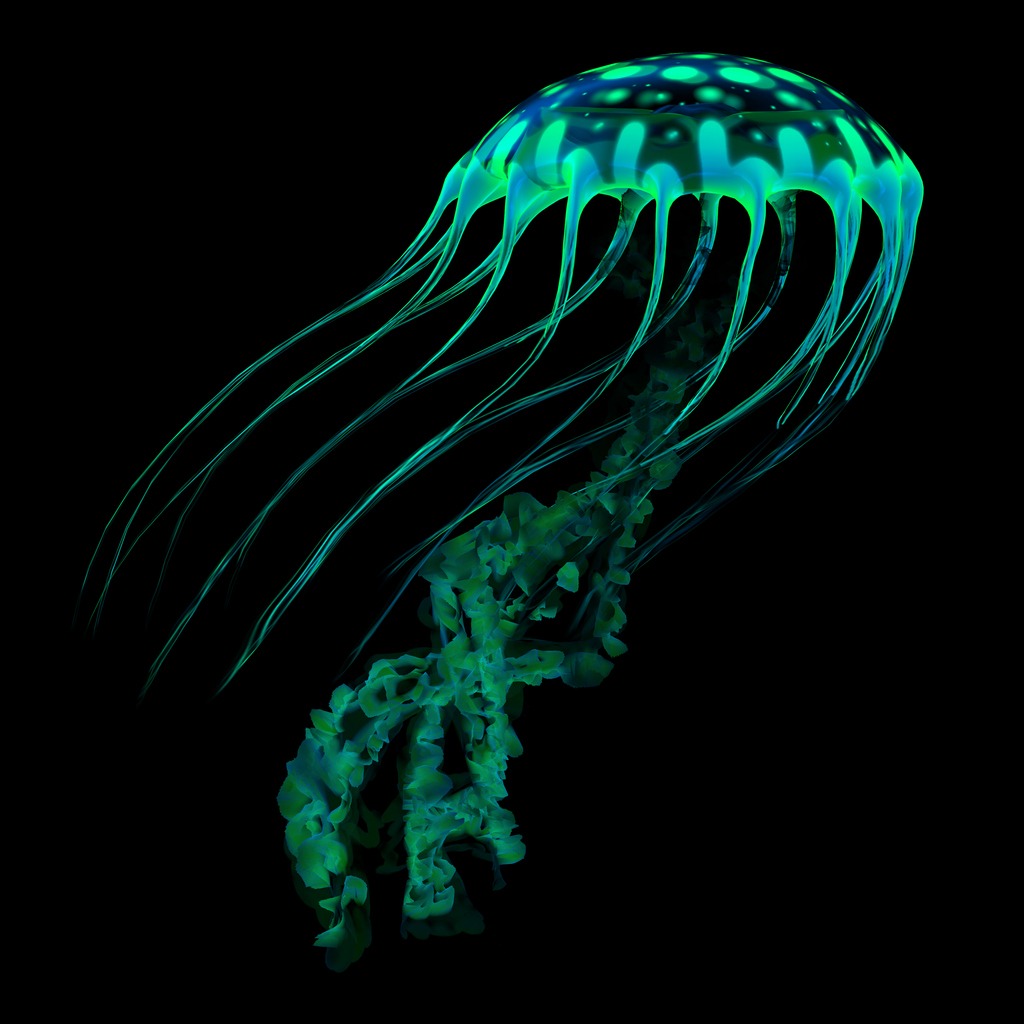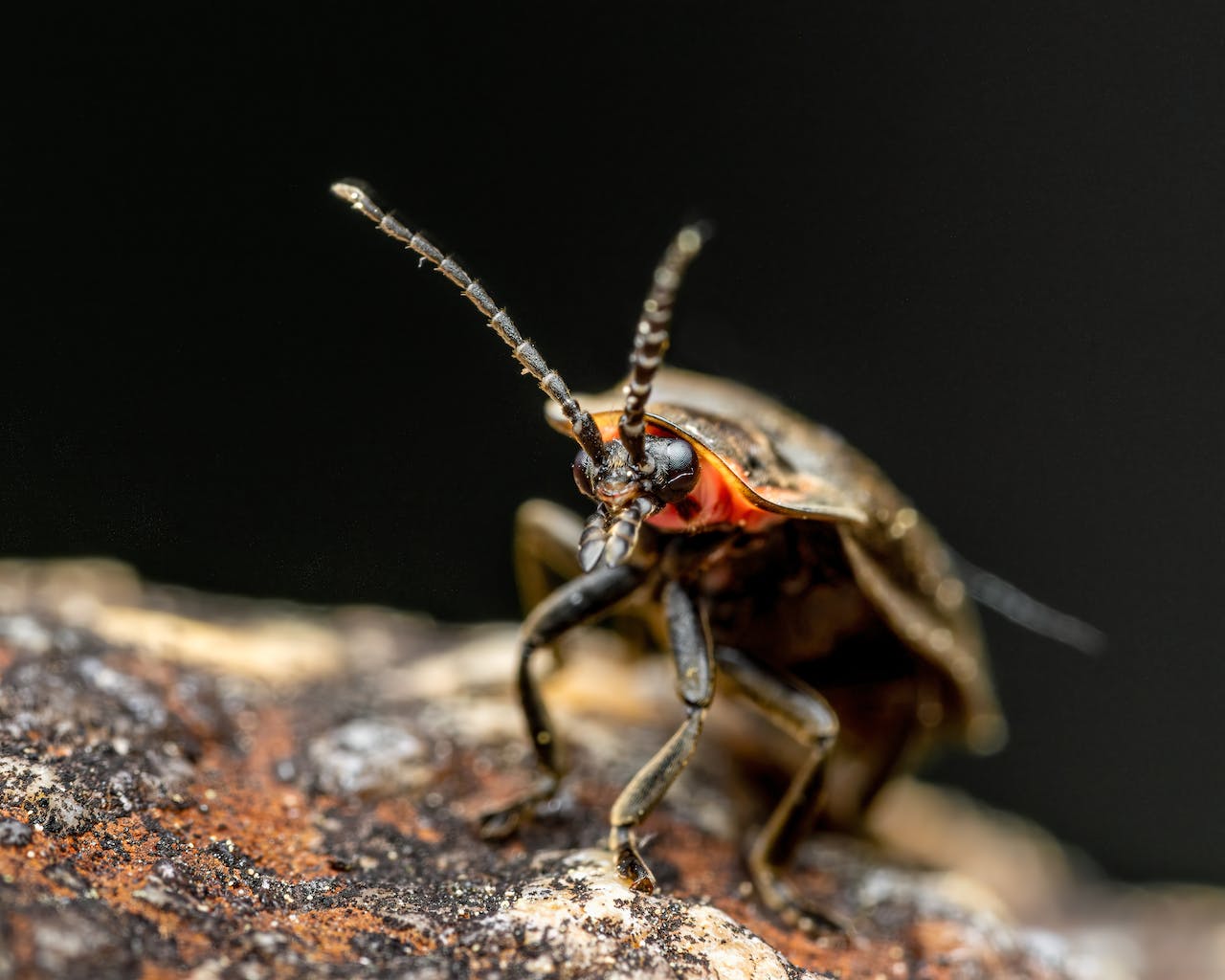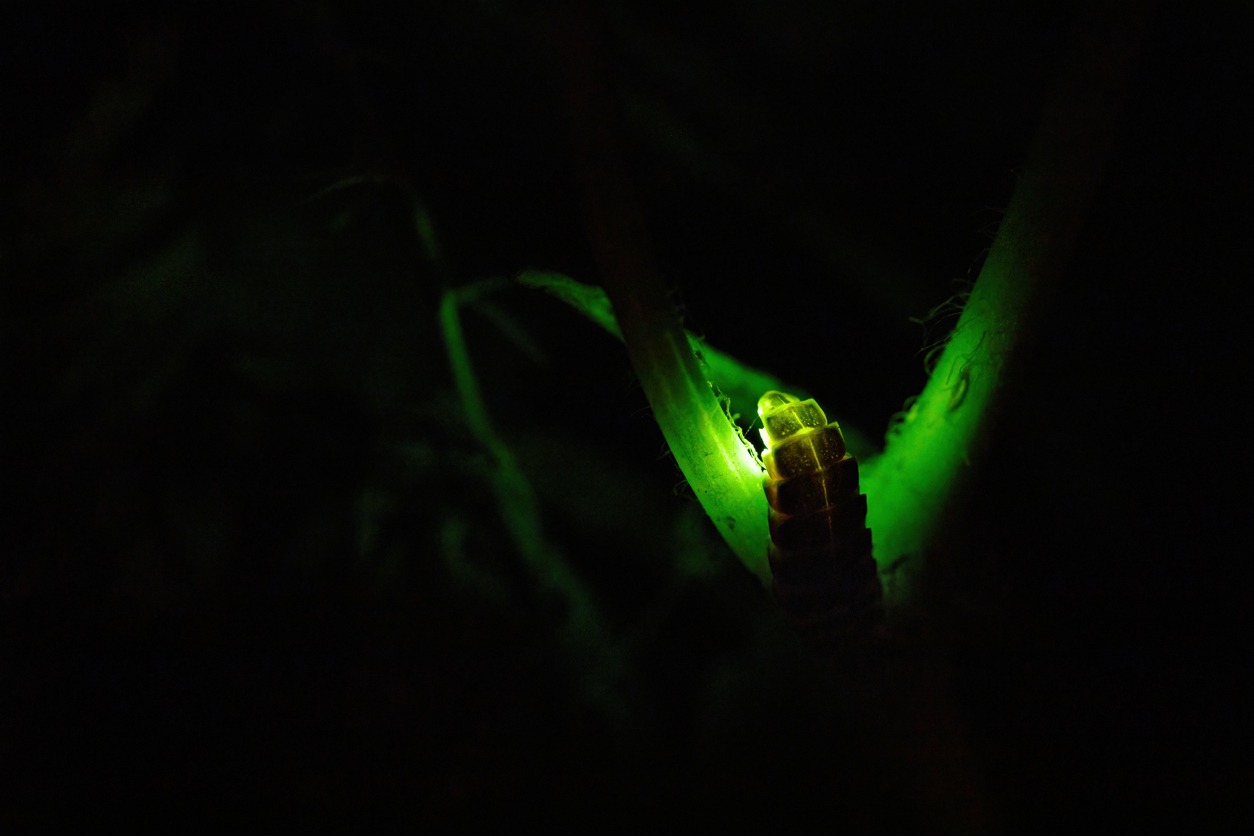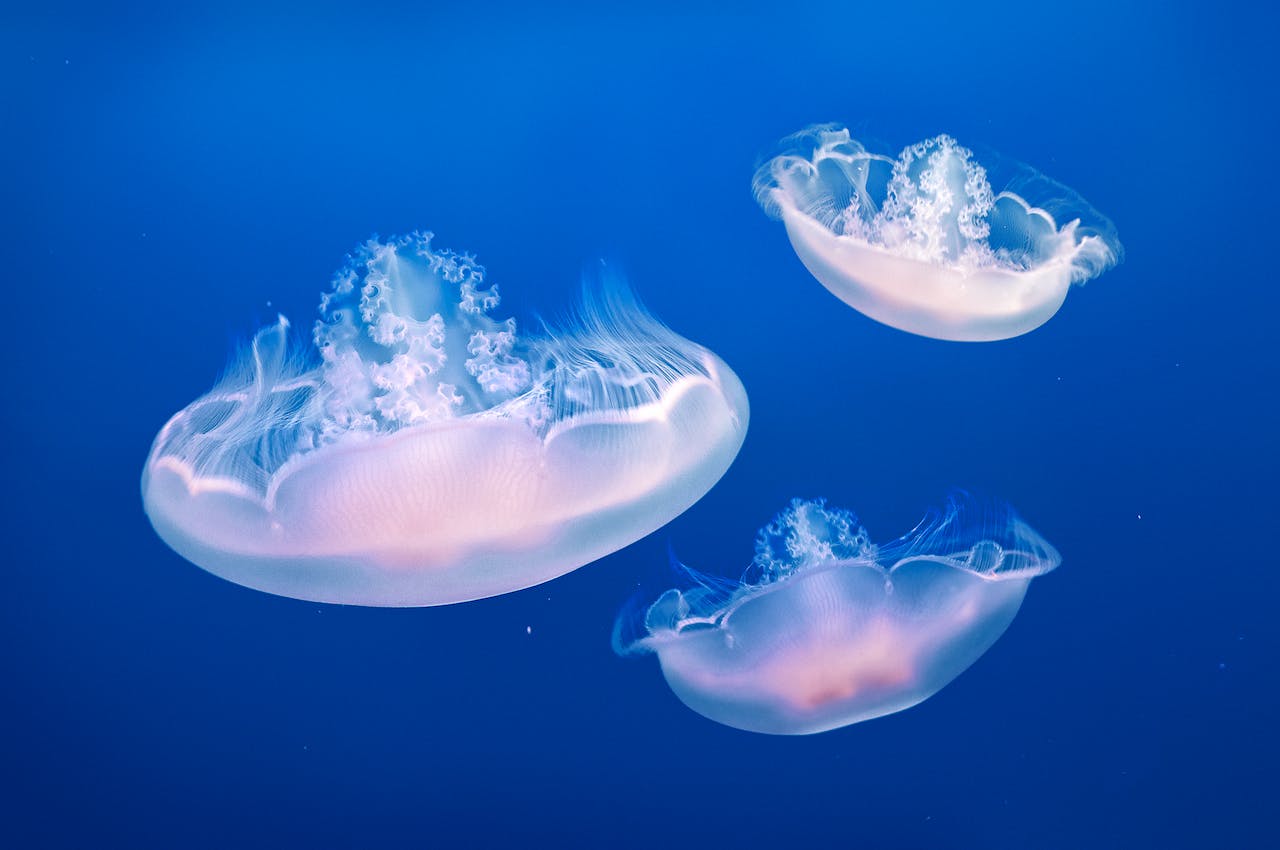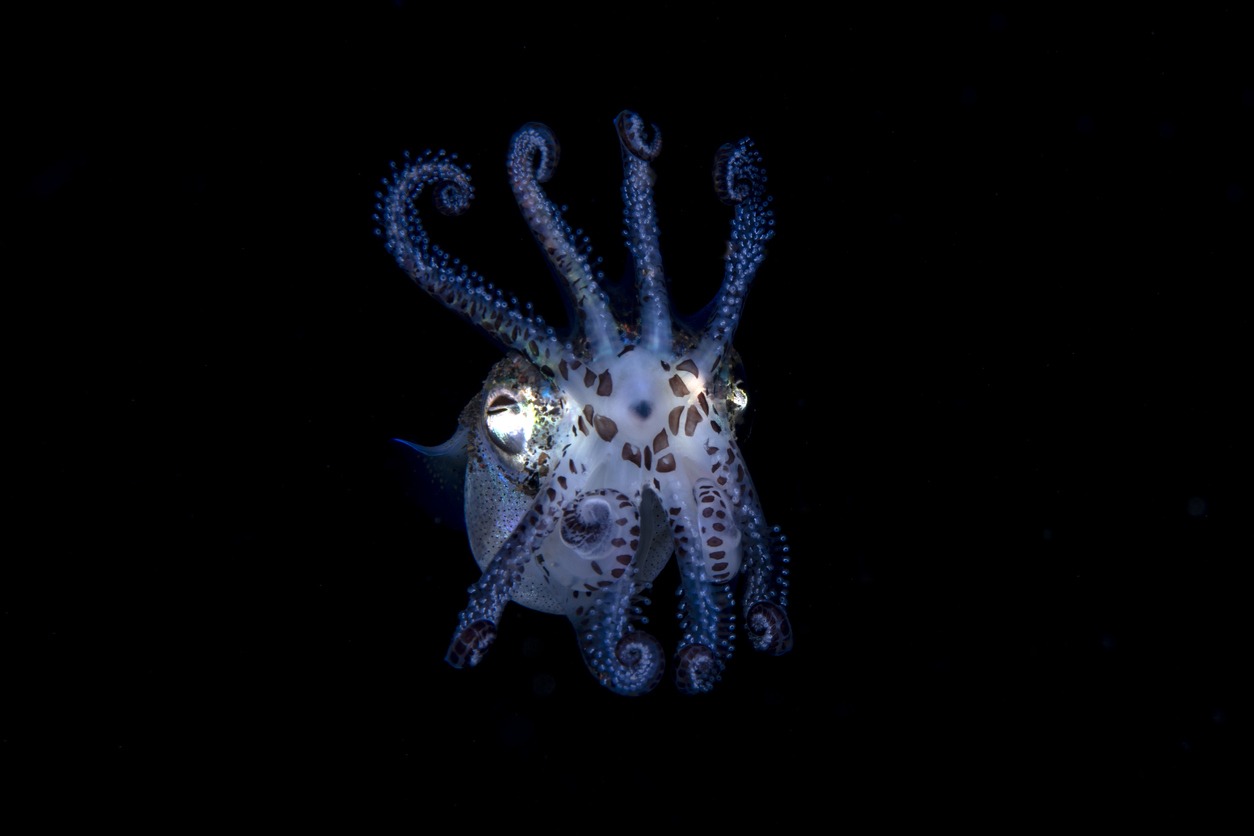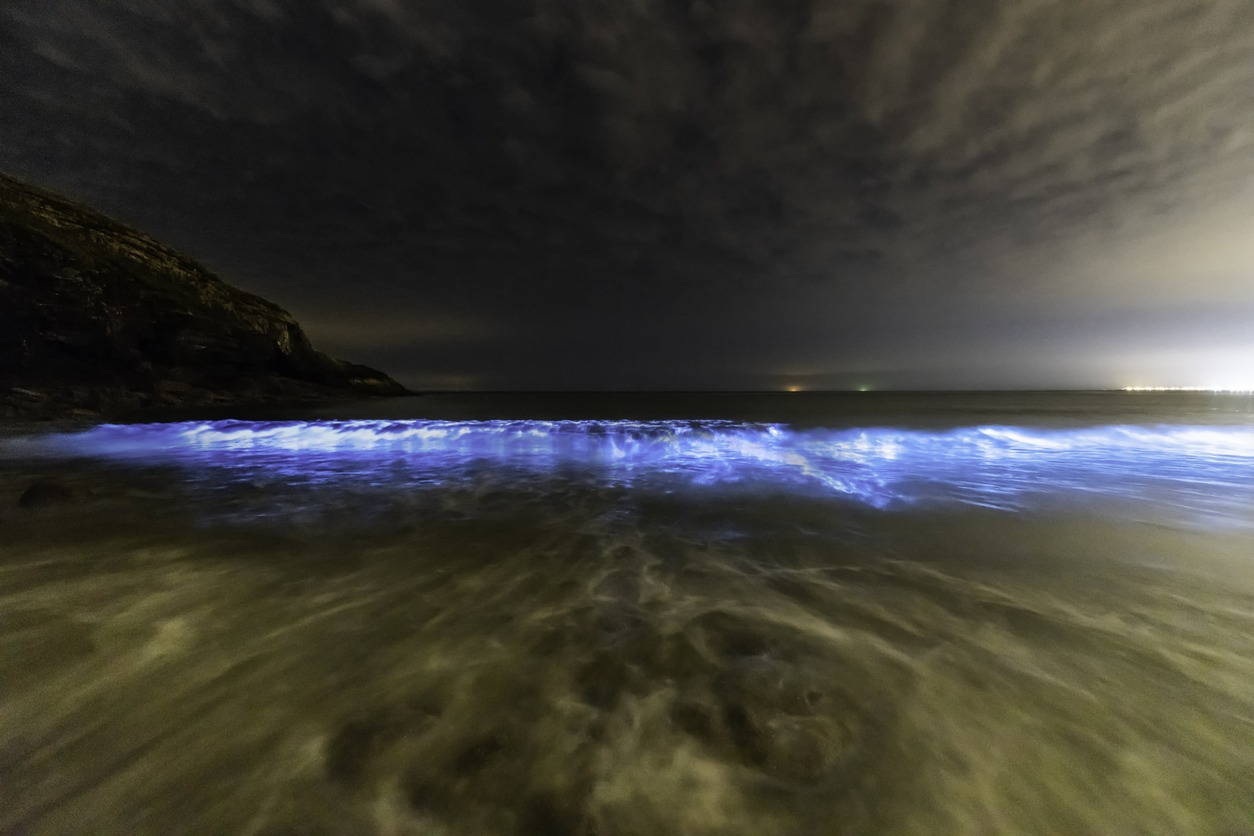The term “bioluminescence” refers to a living organism’s ability to produce and emit light. It is one of the most fascinating and intriguing phenomena in nature.
The tendency of animals to emit light is not completely limited to creatures swimming in the dim and dark depths of the ocean. However, the vast majority of bioluminescent animals are found in the sea. On the other hand, there is only a handful of bioluminescent land animals, most notably the firefly and the glow worm.
These glow-in-the-dark creatures continue to fascinate human observers. But for the animals, they use bioluminescence as part of their survival – a strategy to lure prey, a way to attract mates or a defense mechanism to bewilder their predators.
Without further ado, here are some of the amazing animals known for their bioluminescence:
1. Firefly (Lampyridae)
Probably the best-known bioluminescent land creature, a firefly is a winged beetle which has specialized light organs emitting from its abdomen. The light is due to a reaction of luciferin (a chemical which is also found in other bioluminescent insects) together with calcium, oxygen, adenosine triphosphate (ATP) and an enzyme called luciferase.
There are over 2000 species of fireflies, which are found in both temperate and tropical environments. Fireflies produce light of various colors such as white, yellow, green, or pale red. They emit light in blinking patterns to attract mates, or to warn predators not to eat them because their bodies contain toxic chemicals which deem unappetizing.
2. Glowworm (Arachnocampa luminosa)
Despite the name and appearance, a glowworm is not a worm at all, but a larva of various insect groups, as well as adult females resembling a larva. They produce light of different colors such as green, orange, and yellow. Many of these glowworms belong to the four families of beetles: Elateridae, Lampyridae, Phengodidae, and Rhagophthalmidae.
The adult females that resemble an insect in a larval stage are called “larviform females.” Usually, larviform females are wingless and larger than males.
Like fireflies, glowworms also produce light from their abdomen. Glowworms emit light to attract prey, as well as to warn predators that they are toxic and would not make a tasty meal.
3. Clusterwink Snail (Hinea brasiliana)
The clusterwink snail is only one of the very few sea snails to have bioluminescence. The creature has the scientific name of Hinea brasiliana because it was initially thought to inhabit the coast of Brazil. Unfortunately, it does not live there. Instead, it is native to New Zealand and southeastern Australia.
When disturbed, the clusterwink snail flickers its shell with a bluish-green light, which becomes more intense when it encounters an impact with a fast-moving object. The light may function as a defense mechanism to dazzle and confuse predators, while the soft parts of the snail’s body remain protected by its shell. As the light stuns its predator, it even attracts the larger predators of the snail’s predator.
4. Jellyfish (Phylum Cnidaria)
The jellyfish is another well-known bioluminescent creature. Many of the jellyfish species emit blue or green light from their transparent bodies, displaying one of the most dazzling and beautiful scenes in the underwater. Like many other bioluminescent animals, the jellyfish uses its light for defensive purposes. The light emission is activated upon contact, which serves to stun predators. The light also makes the predators more vulnerable and may attract other creatures to prey on the jellyfish’s predators.
- Atolla Jellyfish (Atolla wyvillei): Uses bioluminescence to create an alarm signal, possibly to attract the predators of its attackers.
- Crystal Jellyfish (Aequorea victoria): These jellyfish have a green fluorescent protein that has been crucial in biological research.
- Northern Comb Jelly (Beroe cucumis): Possesses bioluminescence and is known for its beautiful light display.
5. Sea sapphire (family Sapphirinidae)
The sea sapphire belongs to the group of small crustaceans called copepods. This tiny and translucent parasitic creature is found in the marine environment all over the world. While other bioluminescent creatures glow, the sea sapphire otherwise sparkles. This is partly due to its iridescent, crystal plates inside the animal’s epidermal cells which can capture light and reflect it back. The light may come in different colors such as blue, yellow, orange, and gold.
Males only emit light in the presence of females as a way to attract them. They light up, and within the blink of an eye, they disappear.
6. Squid (Order Teuthida)
Squid, fascinating and enigmatic creatures of the ocean, possess the extraordinary ability to emit light. This remarkable trait, found in several squid species, is the result of a complex biochemical process. Bioluminescence in squid is primarily facilitated by specialized light-producing organs called photophores, which are capable of producing and emitting light through a chemical reaction. These photophores can vary in size, number, and location on the squid’s body, offering a diversity of bioluminescent displays across different species. Here are a few of the different varieties of squid that emit light:
- Firefly Squid (Watasenia scintillans): The firefly squid is only one of the few squids that display bioluminescence. Its head, arms and mantles have tiny light-producing dots called photophores. The squid flashes its light as a way to lure prey, mainly small fish. The light emission also serves to attract a mate. Firefly squids have been long observed in Japan to give a mesmerizing marine light show. The county has long considered firefly squids as a delicacy.
- Vampire Squid (Vampyroteuthis infernalis): A deep-sea cephalopod that emits light from photophores on its body to confuse predators.
- Bobtail Squid (Euprymna scolopes): Uses bioluminescence to camouflage itself from predators and prey in the shallow waters.
- Hawaiian Bobtail Squid (Euprymna scolopes): Hosts bioluminescent bacteria in its mantle to help it camouflage against moonlit waters.
7. Dragonfish (Group Stomiidae)
The dragonfish is a monstrous-looking scaleless fish that belongs to the group Stomiidae. They have specialized organs called photophores, which are responsible for emitting light. Like many bioluminescent marine creatures, the dragon is typically found in the depths of the ocean. Dragonfish uses its light to lure prey. Aside from the blue-green light, the dragonfish has also the ability to emit red light, which serves to locate prey in the dark.
8. Dinoflagellates (Phylum Dinoflagellata)
Dinoflagellates are also known as “fire algae,” a type of unicellular algae. These tiny creatures are found in both seawater and freshwater environments. Some species of dinoflagellates have the ability to emit light due to the chemical compounds that produce light as they react to external stimuli. The dropping temperatures also cause dinoflagellates to glow. While their displays of light during the night continue to dazzle spectators, dinoflagellates use their unique incandescent feature to ward off prey.
9. Octopus (Order Octopoda)
A few species of octopus are bioluminescent, most notably the glowing sucker octopus. Its tentacles have photophores, which are responsible for emitting light. The flashes of light serve to attract prey, to ward off predators, as well as to attract mates. Here’s a list of some octopus species known for their light-emitting abilities:
- Stauroteuthis syrtensis: Known as the bioluminescent octopus, this species emits light from photophores on its arms.
- Octopus wolfi (Star-sucker Pygmy Octopus): One of the smallest known octopus species, it has been observed to have bioluminescent capabilities.
- Hapalochlaena lunulata (Greater Blue-ringed Octopus): While not bioluminescent, it’s worth noting for its vivid, iridescent blue rings that become more intense when the animal is agitated or threatened.
- Bolitaena pygmaea (Pygmy Octopus): This deep-sea octopus species has been noted for its ability to emit light.
- Japetella diaphana: A deep-sea octopus that can turn its bioluminescent capabilities on and off, likely as a form of camouflage against predators.
10. Cookiecutter Shark (Isistius brasiliensis)
The cookiecutter shark is one of the few sharks which prefer to live in the depths of the ocean. It gets its name from its curious way of feeding: it gouges out round, cookie-sized chunks of flesh of its hapless victims. It has a dark brown body and an even darker “collar” in the gill region, which is believed to act as a lure.
The cookiecutter shark’s lower belly is concentrated with photophore glands, which are responsible for producing light. These glands produce luciferase, an enzyme also found in other bioluminescent creatures. Luciferase converts chemical energy to light energy, causing it to emit light. The gland’s surrounding transparent cells also allow the light to glow throughout the cookiecutter shark’s skin.
11. Anglerfish (Order of Lophiiformes)
Anglerfish possess a specialized, bioluminescent organ called the esca, located at the end of a protrusion (illicium) on their heads. The esca contains bacteria that produce light through a chemical reaction. This light is used to lure prey close enough for the anglerfish to capture them, a critical adaptation for survival in the dark depths of the ocean.
12. Railroad Worms (Phrixothrix hirtus)
Railroad worms, which are actually a type of beetle larva, have organs on their bodies that can produce light. The bioluminescence is created through a chemical reaction involving a light-emitting molecule called luciferin and an enzyme called luciferase. The light emitted by these worms is typically green and is believed to be used for warning predators and possibly for mating purposes.
13. Lanternfish (Myctophidae)
Lanternfish are equipped with photophores, light-producing organs, along their undersides. The light is produced by a chemical reaction within these photophores. The primary function of this bioluminescence is thought to be counter-illumination camouflage, helping the fish blend in with the dim light from above and evade predators.
14. Krill (Euphausiacea)
Some species of krill can produce light using photophores. Similar to other bioluminescent organisms, this involves chemical reactions that emit light. The bioluminescence in krill is not fully understood but is hypothesized to be used for communication, mating, or as a defense mechanism to confuse or deter predators.
15. Flashlight Fish (Anomalopidae)
Flashlight fish have bioluminescent organs under their eyes. These organs contain symbiotic bacteria that produce light through biochemical reactions. They use this light to navigate, communicate, find food, and evade predators in the dark ocean waters. The fish can control the intensity and direction of the light, often blinking it on and off during navigation.
Conclusion
The world of bioluminescent animals is a mesmerizing and illuminating chapter in the story of nature’s wonders. From the eerie glow of the deep-sea anglerfish to the enchanting flashes of railroad worms, each bioluminescent creature offers a unique glimpse into the ingenious ways life has evolved to harness light. These glowing beings not only captivate our imagination but also hold pivotal ecological roles in their respective environments. Their ability to produce light aids in vital functions such as predation, protection, communication, and mating. Bioluminescence, more than just a beautiful spectacle, is a testament to the adaptability and resourcefulness of life forms in navigating the diverse challenges of their habitats.
Furthermore, the study of bioluminescent organisms extends beyond mere fascination, offering valuable insights and applications in scientific research and technology. From medical advancements to ecological studies, the mechanisms of bioluminescence are continually providing inspiration for innovation. The ethereal beauty of these glowing creatures reminds us of the profound mysteries of the natural world and the endless discoveries that await. As we delve deeper into understanding these luminous beings, we not only uncover more about their world but also about the potential within our own, demonstrating that even in the darkest depths, nature finds a way to shine.
